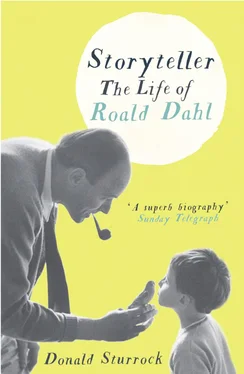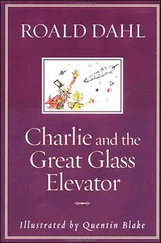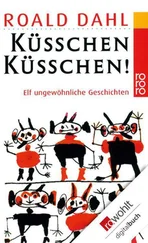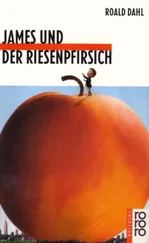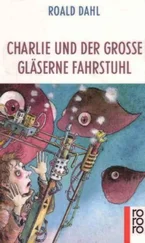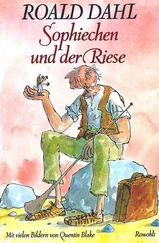1 ...6 7 8 10 11 12 ...18 Exactly when Harald Dahl arrived in South Wales is not clear. He does not figure in the UK census of 1891; however, by 1897 a mustachioed and dapper Harald is posing for a portrait photographer in Newport, some 15 miles along the coast from Cardiff. His long, flat face, round forehead and confident, sardonic eyes bear little resemblance to the oafish features of his father, which scowl out of an earlier page in the same family photograph album. 5It’s likely that this photograph of Harald, despatched to sisters and friends in Paris, was taken not long after he arrived in the Cardiff area and began learning his trade in shipping. In 1901 the census records that he was still single, working as a shipbroker’s manager and lodging near the docks in a small redbrick terrace at No. 3, Charles Place, Barry, in the house of a retired land steward called William Adam, his wife Mary and their two adult daughters. Yet, despite his relocation to South Wales, a significant part of Harald’s heart had remained in France. He had fallen in love with a glamorous doe-eyed Parisian beauty named Marie Beaurin-Gressier. Later in the summer of 1901, he returned to Paris and married her.
Her granddaughter Bryony describes Marie as coming from “a posh ancien régime family that had become rather impoverished and down on its luck”. 6Certainly, the Beaurin-Gressiers were not bourgeois. Though they had houses in Paris and in the country, near Compiègne, they seemed more inclined to sport and leisure than to commerce. Rugby was a dominating interest. Two of Marie’s brothers, Guillaume and Charles, played for Paris Stade Français, the latter representing his country twice against England, while one of her sisters married the captain of the French team that won a gold medal at the 1900 Olympics. Another sister went to Algeria and married an Arab. Another brother ran a well-known Parisian fish restaurant. Yet another was an auctioneer. Marie was the most beautiful. Waiflike, elfin and delicate, she had a pale complexion, a mop of thick dark hair and sad, serious eyes. Fifteen years her senior, Harald must have had enormous charm, as well as good financial prospects, to succeed in stealing her away from her warm and adoring family. A snapshot of her on her wedding day, on a sunny veranda in the French countryside, beaming with delight and surrounded by admirers, suggests that she was very much in love. But it also suggests her innocence. She can surely have had little sense of what life in industrial Cardiff would offer her. Perhaps to counteract any potential feelings of homesickness, Marie brought some reminders of France with her to South Wales. Her trousseau boasted a diverse collection of jewellery, paintings and furniture, including a rosewood bedstead, various antique tables, chairs, secretaires, cabinets, an astronomical clock and an elaborate Louis XVI timepiece. Touchingly there was also a gilt mirror “carved by Mr Dahl and presented to Mrs Dahl”. 7
Shortly after the newlyweds returned to Cardiff, Harald went into business with another expatriate Norwegian, three years younger than he was: Ludvig Aadnesen. The two men had become acquainted with each other in Paris, but the Aadnesens, who came from Tvedestrand, near Krager0, the birthplace of Edvard Munch, were already part of Harald’s extended family. One of them had married Harald’s sister Clara, and emigrated to South Africa with her. †Ludvig, a lifelong bachelor, shared Harald’s fascination for painting and became his confidant and closest friend.
Financially, it was a good move. Over the next two decades the ship-broking firm of Aadnesen & Dahl, which supplied the ships that arrived in the docks with fuel and a host of other items, would expand from its small room in Bute Street to acquire offices in Newport, Swansea and Port Talbot, as well as large premises in Cardiff, which at one point also housed the Norwegian Consulate. Gradually the partnership began to trade in coal as well as simply supplying ships, and both men became rich. Dahl and Aadnesen were business partners, but they were also immensely close, and Ludvig occupied “an incredibly special place” 8in Harald’s affections. In the family he was always referred to as “Parrain” (the French for “Godfather”), and when Harald died, he bequeathed to his “good old friend and partner” the only named object in his will: a painting by Frits Thaulow called Harbour Scene. The painting, now lost, must have symbolized many shared memories for the two men. It spoke, of course, of ships and the sea that had caused them both to move to Wales, but it also evoked their youth together in Norway.
Harald’s marriage to Marie began promisingly. He rented an Arts and Crafts seafront house near the docks in Barry, round the corner from where he had been lodging, with a first-floor balcony that offered a fine view of the bay. There, their first child, Ellen Marguerite, named after Harald’s mother, was born in 1903, and a son Louis, named perhaps after her elder brother, three years later in 1906. Those are the bare statistics. Yet while archival research can reconstruct the landmark events of a vanished life — its births, marriages and deaths — it cannot bring to life the personality that lived between these records without more personal, idiosyncratic evidence. Harald left diaries, letters, paintings, odd pieces of carving, and other artefacts that hint at his character. The contents of the expensive French leather wallet that was in his pocket when he died, for example, now carefully preserved at the Roald Dahl Museum and Story Centre in Great Missenden, complete with postal orders and railway season ticket, testify both to his good taste and meticulous habits. Of Marie, however, nothing remains. Even the gilt mirror is no longer in the family. ‡It is consequently hard to hypothesize how she coped with her new life in Barry. But it’s more than likely she suffered. Far away from her family and from the world she loved, the grime and dust of Cardiff Docks must have seemed a poor replacement for the elegance of Paris or the delights of summer days in Compiègne. Living with a Norwegian husband, fifteen years older than she was and accustomed to solitude, also cannot have been easy.
On October 16, 1907, while heavily pregnant with their third child, Marie died. She was twenty-nine years old. Her death certificate indicates that she collapsed and died of a massive haemorrhage caused by placenta praevia — an obstetric complication, where the placenta lies low in the uterus and can shear off from it, causing sometimes fatal bleeding. Someone called Mary Henrich, probably a nurse or nanny as she was also living at the house, was present when Marie died and reported her death to the authorities. Marie’s granddaugther Bryony however remembers a rumour whispered in the family (perhaps stemming from Roald’s mother, Sofie Magdalene) that Marie had been depressed and died from a failed abortion. 9While it is possible that an attempt to terminate the pregnancy artificially might produce similar symptoms to placenta praevia haemorrhage, the risks for the abortionist if the pregnancy was advanced would have been enormous. So, unless Marie had attempted somehow to do it herself, the official version seems a good deal more plausible.
Marie’s death left Harald devastated. He had almost completed building a splendid new whitewashed house for his family, far from the commotion and noise of the docks, in leafy Llandaff — a medieval town that the railway had made a suburb of Cardiff. Harald had designed many of the building’s details himself and proudly named his new home “Villa Marie” in honour of his young wife. Sadly, she never saw it finished. It survives today, though its name has changed, 10but its steeply sloping gables and idiosyncratic Arts and Crafts appearance, with leaded windows and faux medieval buttresses, suggest how much Harald himself had contributed to the design and how much he must have looked forward to a settled and happy family life there. Instead, at forty-four, he found himself suddenly on his own — left to raise two tiny children, aged three and one, neither of whom would ever remember the dusky, wide-eyed waif whose beauty had so bewitched him.
Читать дальше
